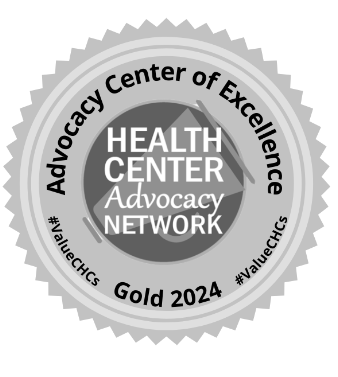
After seeing an encouraging decrease in cases over the past few months, COVID infections are unfortunately back on the rise in our community. Two local experts – Dr. Raghav Tirupathi, Medical Director of Keystone Infectious Diseases, and Dr. Michael Colli, Chief Medical Officer of Keystone Health and Medical Director of Keystone Pediatrics – answer questions related to COVID in our area in today’s Take Care article.
Dr. Raghav Tirupathi
Is our community rate of spread getting better or worse?
The COVID positivity rate is definitely on the uptrend
again with the current positivity rate at around 10%. The Delta variant is the main strain currently circulating and it is very infectious. Each person with COVID-19 could infect seven or eight people.
What are you seeing as far as hospitalizations and deaths?
There has been a slow increase in the number of patients hospitalized and seeking medical care. The opening of schools may contribute to a further increase in the coming weeks. Judging from history, deaths will likely rise a few weeks after hospitalizations do.
Is the vaccine working?
The COVID-19 vaccines have been working very well to prevent hospitalizations and deaths. An overwhelming majority of the patients currently admitted are unvaccinated. Even though there have been “breakthrough infections” documented in vaccinated individuals, most of them have had minimal or no symptoms and have had a relatively easy recovery. This is true for patients who have multiple medical conditions too. The mRNA vaccines (Pfizer and Moderna) as well as the J and J vaccine have stood their ground against the Delta variant.
Some people still believe COVID is no worse than the flu. How is this different and more dangerous?
COVID-19 and the flu are both respiratory illnesses. However, compared to the flu, COVID-19 can cause more serious illnesses in some people and causes bad outcomes including respiratory failure and death at a higher rate. COVID-19 can also take longer before people show symptoms and people can be contagious for longer.
Is there an end in sight?
It’s understandable that everyone is desperate to understand when and how the pandemic ends. Ending the pandemic requires a concerted national and global effort where everyone plays their role. Vaccination is one of the cornerstones of this effort. We eradicated smallpox from this world with vaccination. Each citizen must do their part to ensure that appropriate public health mitigation measures are effective. Masking is one effective way to limit the contagion.
Why do you think so many people are hesitant to get the vaccine? What do you say to those people?
Despite strong safety and efficacy data, some people are still hesitant to receive the vaccine. The current Food and Drug Administration (FDA) and Emergency Use Authorization (EUA) approved vaccines are very safe and effective at preventing infection, hospitalization and death. People are concerned about possible long-term side effects. However, no non-live vaccine has been shown to cause long-term effects due to the fact that the vaccine leaves the body in 72 hours. In contrast, COVID-19 has been proven to cause long-term health problems in many folks (called LONG COVID). Vaccines have been found to be safe during pregnancy and breastfeeding and have no impact on fertility for women of child-bearing age.
Dr. Michael Colli

What are you seeing in the pediatric population in our community?
We have definitely begun to see a shift in the demographics of patients who contract COVID. Whereas early on, the majority of patients with COVID were older, we now are seeing a younger demographic of patients testing positive. In fact, since the beginning of 2021, 30% of all patients at Keystone who have tested positive are younger than 20. There are two factors that may explain this: 1) the Delta variant may be more contagious and contractible in younger patients and 2) the vaccine rollout in younger patients has been slower.
Do you expect to see an increase in cases with school starting?
Yes. We know that there are many factors that decrease the spread of the virus. Physical distancing has been one of the most effective means of preventing the spread of COVID. With children going back to school, the ability to physically distance in some instances may be limited, and children will naturally be in closer proximity to one another. Furthermore, no COVID vaccine as of yet has received FDA EUA for children younger than 12. Therefore, these younger children will have virtually no protection from the virus and will be susceptible.
However, I do not want this to sound as if children should not go back to in-person education. This pandemic has taught all of us the value of in-person instruction for our children, from both an academic and psychosocial perspective. Schools can do several common sense things to reduce the spread of COVID within their walls. Universal masking, frequent and compulsory hand hygiene, and keeping a 6-foot distance from one another whenever possible are all simple measures which can profoundly reduce virus spread and make in-person education as safe as possible.
Any word on when vaccines will be available for those under 12?
Not yet. The current best guess is mid-winter. Both Moderna and Pizer-BioNTech, the manufacturers of the mRNA COVID vaccines, are conducting trials right now on children under the age of 12, with study results likely to come in the next four to six months. The FDA has asked for up to six months of safety and efficacy data on children before considering them for authorization, which is significantly more stringent than what was required for approval in adults. Although the approval process has taken longer than expected in children, by taking these extra precautions, I think we can assure ourselves that when they are granted final approval, they will be both safe and effective.
Any words of advice for people who still aren’t taking COVID seriously?
36 million Americans have contracted COVID, with close to 620,000 deaths. There are 60,000 Americans sitting in hospitals with COVID right now and a quarter of them require intensive care for their symptoms. COVID affects people of all demographics and ages. Although there are certain risk factors that may impact your outcome, no one is immune from becoming seriously ill or dying from COVID. The Delta variant has increased the likelihood of contracting COVID, as it is severalfold more contagious than the original strain. Many people, from their deathbeds, have wished that they had taken the virus more seriously or gotten a vaccine. In my opinion, you have two choices: get the vaccine or get COVID.
To schedule your COVID vaccine, visit https://keystonehealth.org/covid19vaccine/
This article contains general information only and should not be used as a substitute for professional diagnosis, treatment or care by a qualified health care provider.




